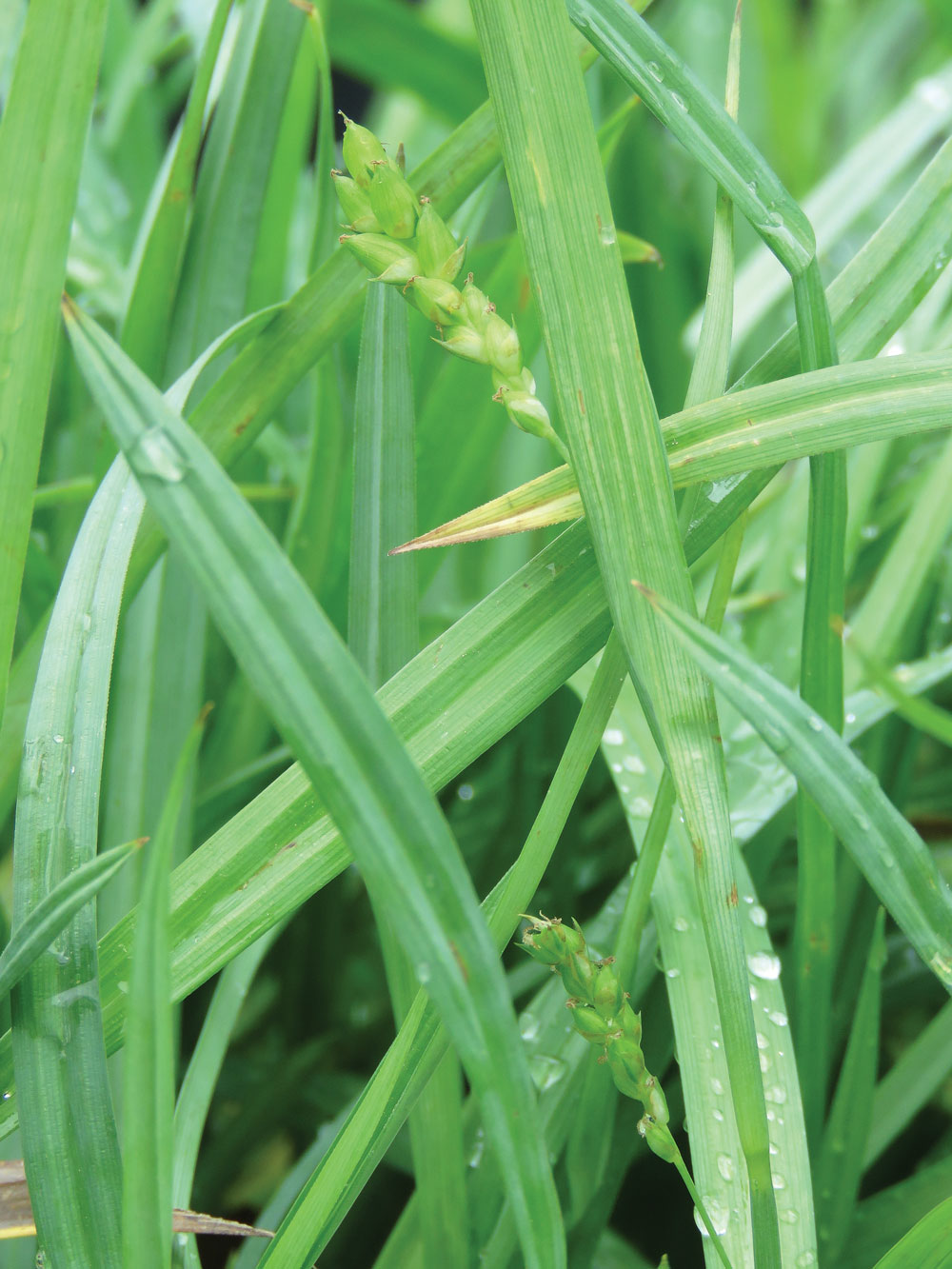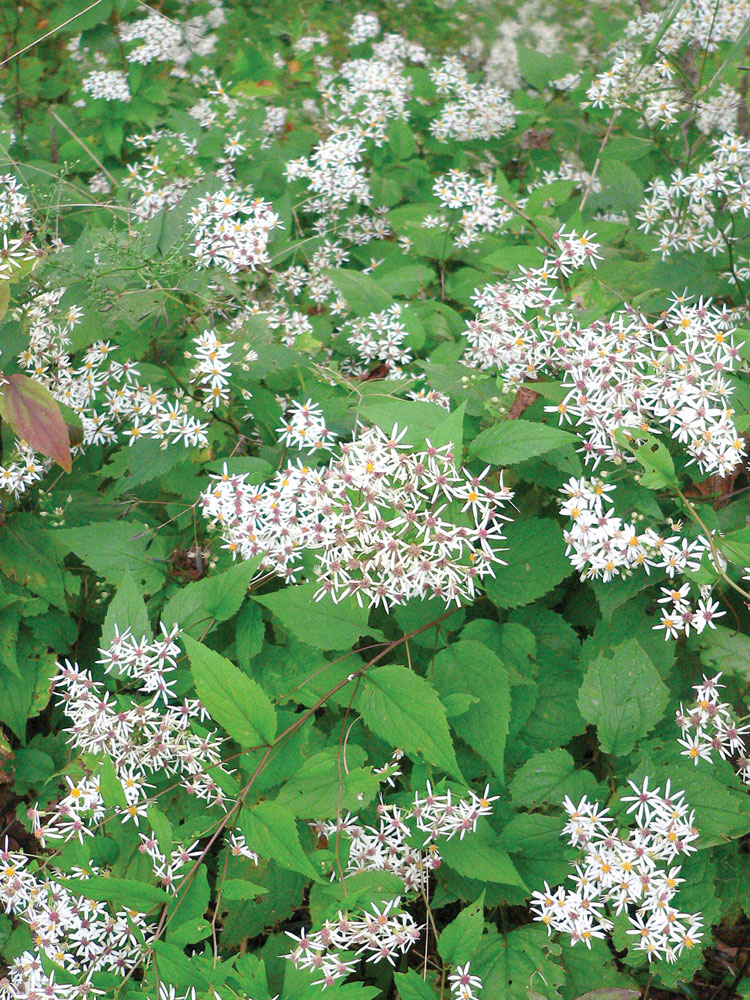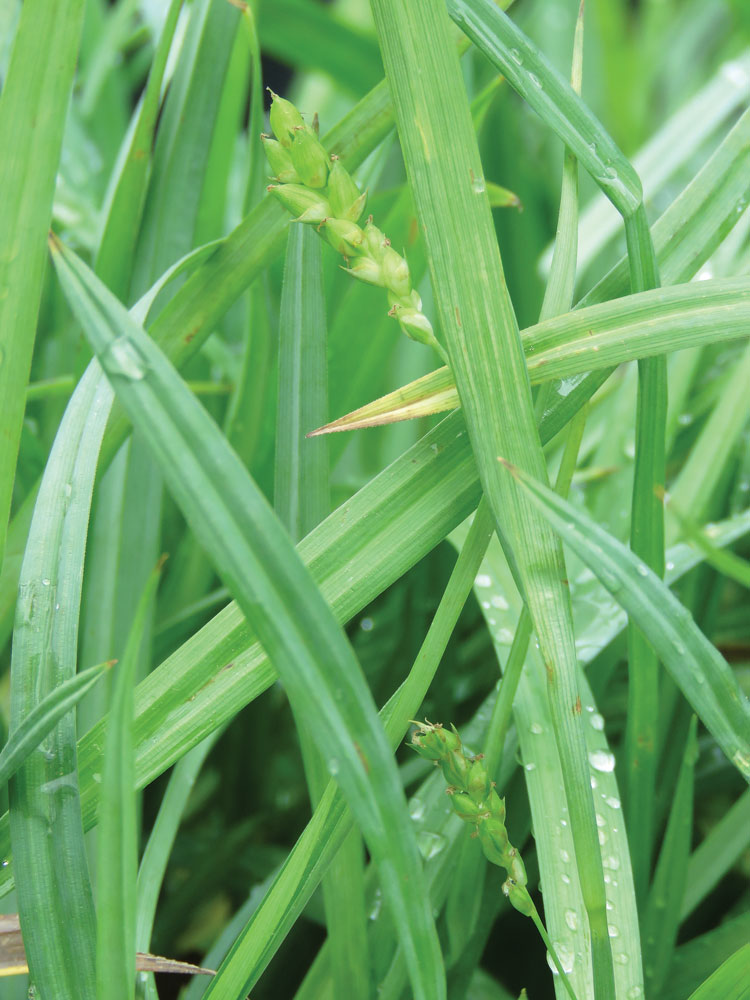Using Native Plants in Wild Spaces

By Celia Vuocolo | Photos by Betty Truax
We all have them: those tough spots in your yard where absolutely nothing will grow. Instead of spending time and money amending the soil and babying ornamental flowers, try planting Virginia native plants.

There is a native plant for virtually every site condition because these species have evolved with our ecosystems, unlike many of the traditional garden plants found in garden centers. Birds, bees and butterflies will also benefit from the addition of native plants to your yard.
The following species are just a handful of options to consider. For more ideas, order the new “Piedmont Native Plant Guide” from the Thomas Jefferson Soil & Water Conservation District. To find out where to purchase native plants, check out the Piedmont Environmental Council’s “Go Native Go Local” guide at pecva.org/gonative.
Dry Shade
Dry, shady spots are probably one of the toughest areas to get anything to grow. However, there are actually a number of native plants that prefer these dry woodland-like settings.
- White wood aster, Eurybia divaricata. This late-summer bloomer thrives in average-dry soil and tops out at ~2 ½ ft. tall. It spreads by rhizomes and acts as a groundcover, so it’s a great “filler” plant for open, shady areas. Asters host 105 species of native butterfly, moth and skipper caterpillars (part of the insect order Lepidoptera) and are visited by a variety of native bees and other insects. Plant aster with native ferns, sedges and wild ginger.
- Appalachian sedge, Carex appalachica. Sedges are native grasses that grow during the cooler times of the year (aka “cool-season grasses”). They provide structure and diversity in native plantings, and several species grow in dry shady areas. In addition to Appalachian sedge, consider planting Eastern star sedge, Carex platyphylla, and silver sedge, Carex radiata.
Sunny Hillside
Want tough plants that don’t mind baking in the sun on the side of a rough or rocky hill? Try these two tough-as-nails plants to start with:
- Heath aster, Symphotrichum ericoides. This aster forms low-growing clumps of white, daisy-like flowers in the early fall. It is especially attractive when planted along a rock wall and allowed to cascade over the edge. The caterpillar of the silvery checkerspot, one of the 105 species of Lepidoptera that asters host, favors this species. The roots are rhizomatous, which will help anchor the soil in place and prevent erosion.
- Pussy toes, Antennaria neglecta. Pussy toes can be found creating a delicate carpet of silvery green leaves in the early spring. The tiny (no more than 6 inches high) flowers resemble cat’s paws, hence the name. Pussy toes host the American Lady butterfly and provide an important food source for native bees in the early spring. Don’t be fooled by its diminutive appearance — this plant will grow in the toughest places!
Turf Alternatives for Shady Areas
Sometimes lawn grass just won’t grow, especially if it’s a shady area. Stop fertilizing and reseeding every year and try creating a seed mix with some of these native sedges instead: blue wood sedge (Carex flaccosperma) and rosy star sedge (Carex rosea). Another common native grass in the Piedmont to consider adding to your mix is poverty oatgrass (Danthonia spicata). Its grassy tendrils curl up tight like a pig’s tail! And finally, don’t get stuck on grasses; consider using other native groundcovers to provide interesting texture, like ebony spleenwort fern (Asplenium platyneuron), for example. ML

Celia Vuocolo is the habitat and stewardship specialist for the Piedmont Environmental Council.


